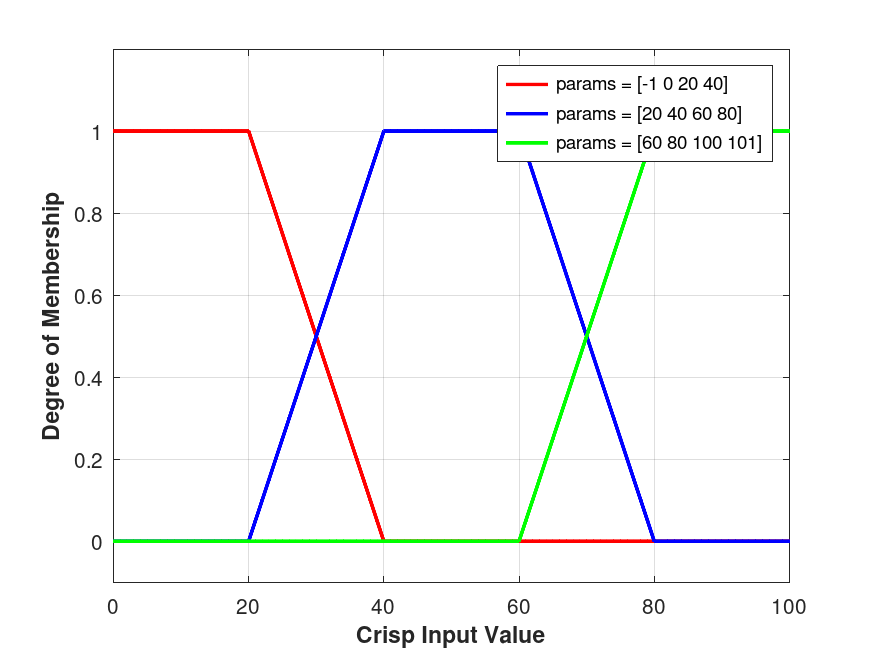Function Reference: trapmf
- Function File: y = trapmf (x, params)
- Function File: y = trapmf ([x1 x2 ... xn], [a b c d])
For a given domain x and parameters params (or [a b c d]), return the corresponding y values for the trapezoidal membership function.
The argument x must be a real number or a non-empty vector of strictly increasing real numbers, and parameters a, b, c, and d must satisfy the inequalities: a < b <= c < d. None of the parameters a, b, c, d are required to be in the domain x. The minimum and maximum values of the trapezoid are assumed to be 0 and 1.
The parameters [a b c d] correspond to the x values of the corners of the trapezoid:
1-| --------
| / \
| / \
| / \
0-----------------------
a b c d
To run the demonstration code, type "demo trapmf" (without the quotation marks) at the Octave prompt.
See also: dsigmf, gauss2mf, gaussmf, gbellmf, pimf, psigmf, sigmf, smf, trimf, zmf
Example: 1
x = 0:100;
params = [-1 0 20 40];
y1 = trapmf(x, params);
params = [20 40 60 80];
y2 = trapmf(x, params);
params = [60 80 100 101];
y3 = trapmf(x, params);
figure('NumberTitle', 'off', 'Name', 'trapmf demo');
plot(x, y1, 'r;params = [-1 0 20 40];', 'LineWidth', 2)
hold on;
plot(x, y2, 'b;params = [20 40 60 80];', 'LineWidth', 2)
hold on;
plot(x, y3, 'g;params = [60 80 100 101];', 'LineWidth', 2)
ylim([-0.1 1.2]);
xlabel('Crisp Input Value', 'FontWeight', 'bold');
ylabel('Degree of Membership', 'FontWeight', 'bold');
grid;
|
